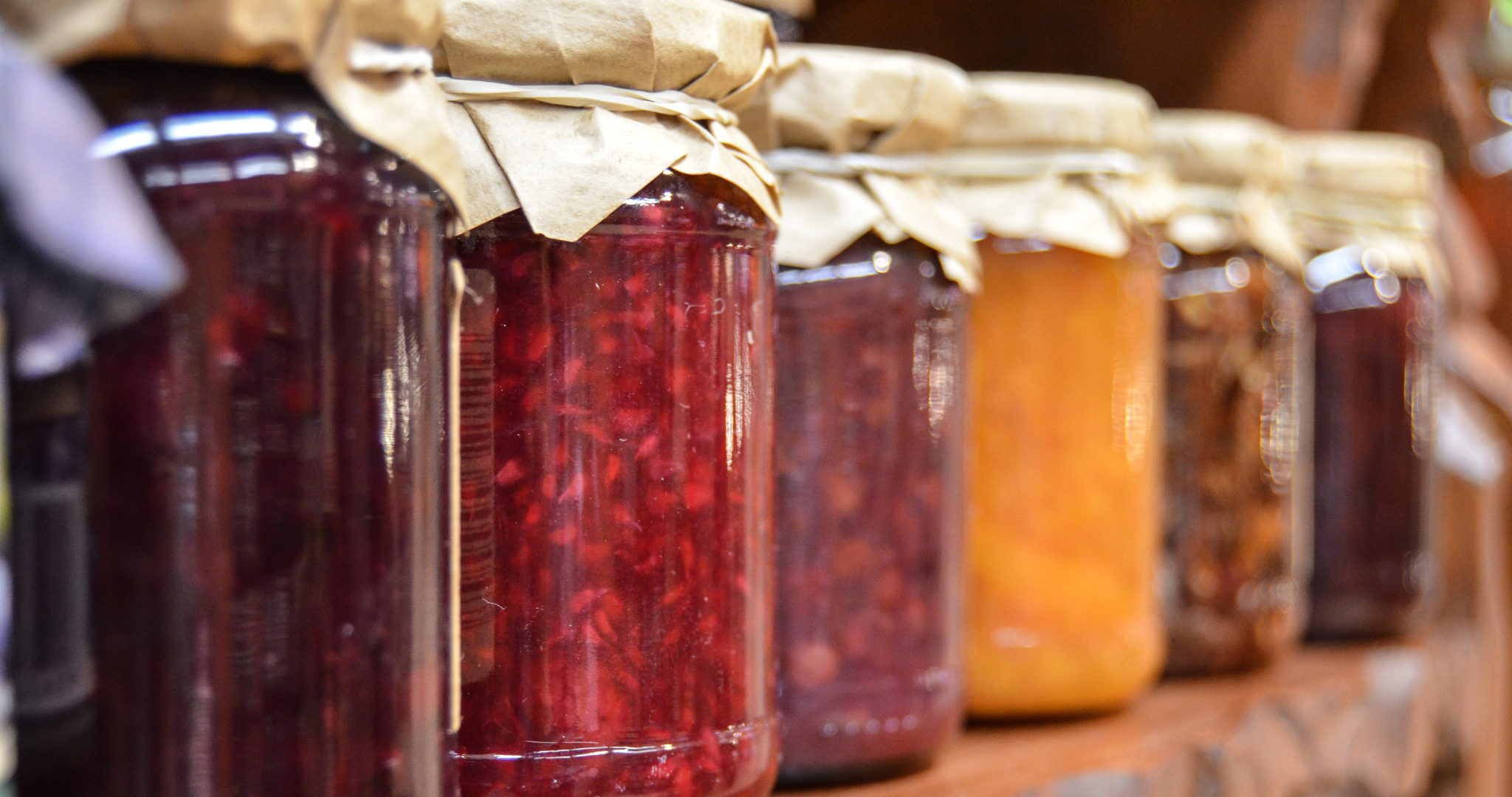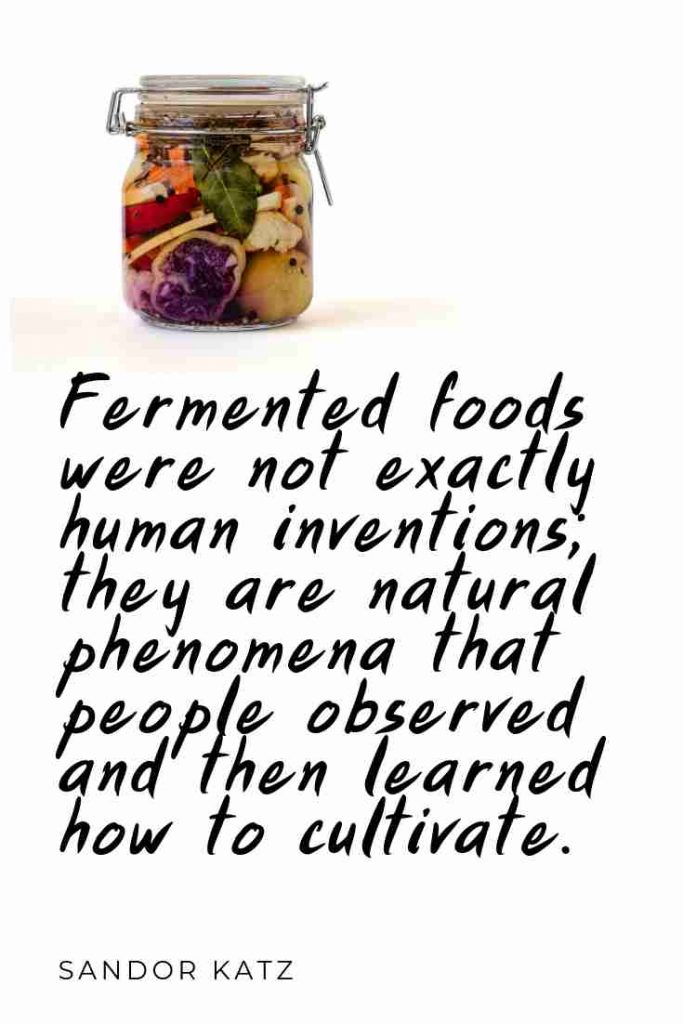
Cultures for GI Health
Why Fermented foods?
Fermented foods support gastrointestinal (GI) health and are an important part of a healthy diet. The history of cultured foods is the story of us.
Before the advent of refrigeration, fermented foods were staples in every kitchen. The process of fermenting foods creates an acidic environment that helps to preserve foods and extend shelf life. We now know that these cultured foods also contain gut-healthy probiotics and metabolites.
we like
Cultured
Foods
Our current food system is devoid of probiotics and enzymes as canning, irradiation, pasteurization, freezing, and adding chemicals have become the means of modern food preservation.
Industrialization has created a world in which food is widely available and easy to access, a dramatic technological leap forward for humankind. However, the negative impact of this proliferation of foodstuff has been just as significant: a decline in the nutritional value of food, and a rise in processed food laden with fat and sugars, that is tasty but biologically destructive.
Fermented foods are “the favorful space between fresh and rotten.”
Sandor Katz
The Art Of Fermentation
The Modern Food Web
Our food web is composed of a variety of food chains, each of which has been declining in biodiversity. The current system of production depletes food energy because our focus on animal proteins has created an imbalance between producers, consumers, and decomposers in the web.
Cultured foods help to complete each chain by decomposing and making nutrients available to start the cycle again. The microorganisms create “living” food out of waste.
New and "Improved" Diseases
The western world has expeienced a new wave of nutrition-related health concerns due to this lack of biodiversity. Obesity, chronic diseases, micronutrient deficiencies, and foodborn illnesses are all on the rise in forms with limited or no treatment options.
New Approaches
Reviving the Art of Traditional Food Preparation
As a result of the breakdown in our food chains, there has been a renewed interest in fermented foods and a return to other traditional food preparation techniques. The potential to enhance nutrition while avoiding those things that deplete health is appealing.
There is an artisanal ethos in embracing the art of fermentation. Nurturing a culture is a process that is dependent on living organisms. And as we know life has an unpredictable quality that makes if fascinating and stressful at the same time. It is always interesting but fermenting is a creative process that has variable outputs.
If you have ever tried to make sourdough bread, you know, the rise is different every time. As much as you may try, making sourdough bread, kombucha or kefir gives different results at different times. With time and patience, the skills can become a part of a daily routine.
- Easy to make
- Flavorful
- Nutritious
Types of Cultured Foods
Fermented Vegetables
There are 3 methods of fermenting vegetables, Lacto-fermentation, whey fermentation, and dried cultures.
Lacto-fermentation got its name because of the particular family of bacteria involved in the process, Lactobacilli. These microbes are naturally occurring bacteria on plants that create lactic acid, which inhibits the growth of toxic organisms, including bacteria, mold spores, and yeasts

Fermentation Methods
Salt Only Lacto-fermentation
Mineral sea salt is all you need to begin culturing vegetables. The salt extracts water from the plant cells and creates an anaerobic environment in which only Lactobacilli can live.
Whey Fermentation
Whey is a probiotic-rich by-product of yogurt and other dairy products. It also contains some proteins, vitamins and minerals too. If you are not lactose-intolerant this can be a flavorful addition to a culture.
Dried Cultures
In freeze drying, both solids and liquids can be preserved without damaging their basic chemical structure. That is why this is the prefered way to preserve cultures over a long period of time.
Vegetables
Cultured vegetables are a simple way to start adding probiotics to your diet. From salads to condiments, fermented vegetables are a flavor-packed treat.

Sauerkraut
Cabbage is the base of this dish. Add other veggies to create flavor profiles.

Kimchi

Cucumbers

Peppers
The shelf life of fresh peppers can be extended with Lactofermentation which also adds depth of flavor.
How To Make Foolproof Sauerkraut

Cultured Dairy
Cultured dairy in its many forms is created by adding Lactobacilli to fresh milk (from non-fat milk to cream) as well as to milk by-products like whey.
For those who are lactose intolerant, cultured dairy products can be a lifesaver as a more easily digested source of protein.
Popular Fermented Dairy
Cheese is the most well-known and widely-used fermented milk product made from only milk, salt, rennet and starter cultures.

Yogurt
Yogurt has become a staple in many households, but store-bought generally does not have the probiotic benefits of homemade.

Cheese
Knowledge of the types of bacteria and microbes that can be used to ferment cheese is an artisanal skill, as evidenced in the varieties of flavors produced by traditional methods.

Sour Cream
Sour cream is exactly what it sounds like, bacterial cultures applied to cream. Most of what we find in the supermarket has minimal bacterial strains due to processing.
How To Incubate Yogurt
Fermented Grains
Grain digestibility is particularly improved by culturing. The surface of grains contain anti-nutrients which are protective chemicals intended to discourage animals from eating the plants. In addition, the fiber in the bran layer of the seed can also be difficult to digest. The bacteria in the fermentation process pre-digest these layers making the nutrients more bioavailable.

Popular Fermented Grains
Fermenting grains is a dietary hack health food fanatics have been using for eons. There are a lot of great ideas to transform complex carbohydrates into more GI-friendly food.

Sourdough
The art of sourdough bread is an artisan’s obsession. Everyone has a unique take on this recipe.

Fermented Brown Rice
Soaking brown rice for a day or two before cooking allows probiotic cultures to grow.

Fermented Oat Porridge
Culturing oats before cooking them makes them easier to digest. Yogurt is a great way to add flavor and probiotics to your morning meal.
Commercial Yeast vs. Sourdough Leavening
Other Fermented Foods for GI Health

Fermented Pulses
Beans and lentils are well known to be difficult to digest for many people. Soaking and sprouting pulses break down the fiber and complex carbohydrates that create digestive discomfort. Fermented soybeans have been used in Asian foods for millennia.

Fermented Seeds
Seeds are more commonly sprouted to improve digestion and assimilation. However, they can also be cultured with whey for a completely different texture and taste.
Cultured nut cheeses have a texture and taste to dairy cheese and is a great vegan substitute.

Fermented Meats
From fish to beef, most animal proteins, historically, have been preserved with cultures. Salting and drying meats are the most widely used methods of extending shelf life. While it is not generally recommended to try fermenting meats at home (the bacteria formation must be carefully monitored), there are some sausages and deli meats commercially available that may have beneficial bacteria.
FAQs
This is a selection of the most frequently asked questions about the benefits of fermented foods
Lacto-fermentation actually gets its name from the Lactobacillus bacteria involved in the process.
However, some people do use whey (a milk by-product) as a starter to Lacto-ferment foods.
It really is. Salt is used in most food cultures. It is a tried and true process to extend the useful life of foods, i.e. curing meats. The salinity of the food prevents pathogens from developing in and on the food.
See our cultured vegetables page.
Foods are always the preferred method of ingesting nutrients because they are a balanced. There are typically multiple vitamins and minerals and multiple microorganisms. When our diets do not provide enough, supplements may help but you run the risk of creating or furthering an imbalance.



